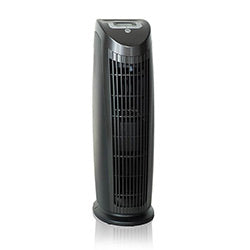
What is dust? In short, a floating garbage dump. Dust is made up of itsy bitsy particles of human skin cells, hair, pollen, soot, microscopic dust mite waste, fibers, dirt, dander, and mold. No wonder 20 million Americans have dust mite allergies, and hundreds of thousands more are impacted by pollen, dander, and the other substances that accumulate in dust. If you’re sneezing just thinking about dust, here are 10 ways you can mitigate sneezing, itchy eyes, asthma, and many other symptoms of dust allergies.

1. Mop, Don’t Dust
When you brush dust off of your bureau or TV, all you do is send it airborne so it can settle elsewhere. That’s why you should use a damp cloth, mop, or clingy surface to dust—so it sticks to that and you can throw it away. Otherwise, you’ll just end up stirring up lots of allergens that will make you miserable.

2. Vacuum Once Per Week
You should vacuum once per week to keep dust mites and dust allergies at bay. Start by dusting (by our definition above) and wiping surfaces clean, so when it’s time to vacuum you suck up as much dust as possible. Make sure to vacuum your baseboards, air vents, and every nook and cranny possible. And don’t forget to empty the cannister! Otherwise, dust mites can crawl back into your home. Use a vacuum designed to tackle dust mites and grime for the best results.

3. Go for Hardwood
Carpet may feel soft and comfy between your toes, but it’s a breeding ground for mold, germs, dust, odors, and dust mites—stuff that can give you allergies. If you have an option, install hardwood or hard surfaces that are easy to clean (like tile). If you do have carpet, use a powder that keeps fleas and dust mites at bay.

4. Get an Air Purifier
Instead of scrubbing every millimeter of your home to remove dust and dust mites (an unsustainable feat), get an air purifier that does the work for you. Many brands manufacture air purifiers and filters that remove odor, allergens, and harmful chemicals from the air, so your home won’t only smell better but be healthier for you and your family too.

5. Run a Dehumidifier
Dust mites thrive in humidity. When you can, keep the air conditioning on and run a dehumidifier so relative humidity never exceeds 50 percent. Dehumidifiers work two-fold—keeping dust mites away and preventing dangerous mold from growing in your home (another huge cause of allergies).

6. Wash What You Can and Cover Everything Else
Dust mites are a main cause of dust allergies. These tiny bugs feed on dead human skin cells and love hanging out inside mattresses and upholstered furniture—where their food is in high supply. Use anti-dust mite mattress and pillow covers to eliminate habitat, vacuum your furniture, and cover what you can with plastic to keep your home inhospitable to mites. Also, wash your area rugs, pillows, and bedding in the hottest water and on the highest dryer setting they can stand to kill dust mites and their eggs.

7. Clean Fans and Replace Filters Often
Dust collects on everything that stands still—including your ceiling fans and grates of your air vents. Since air flows through these objects regularly to circulate air throughout your home, make sure they’re clean! Once per week, run a damp cloth, sponge, or dust collecting sheet over the blades of your fans and in your air vents. That way, you won’t be blowing dust all over the place and breathing it in more than you should.

8. Keep Windows Closed
Pollen is a big component of dust and one that causes tons of sneezing and unpleasant allergies. During pollen blooms (in late winter, early spring, and autumn) keep your windows closed. This will prevent pollen from blowing into your home and collecting everywhere. Also, consider eating a spoonful of local raw honey during these times to naturally combat your pollen allergies.

9. Use Saline Nasal Spray
Your body is designed to keep harmful germs and allergens out. Your nose does its job best when it’s moist. Use a nasal saline spray daily to help your nose produce mucus to protect your airways and body from dust allergies.

10. Take an Antihistamine
If you can’t beat your dust allergies, take an antihistamine to minimize the symptoms. Talk to your doctor about your options—he/she may prescribe a stronger antihistamine or you may be able to purchase one at the drugstore. In severe dust allergy cases, you may be a candidate for allergy shots, a type of immunotherapy which builds your tolerance to allergens.
We Recommend



